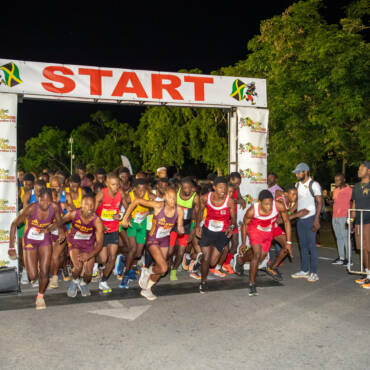Common Running Injuries You Can Avoid. Guest blog post from Bethany Widdicombe at Running Stats
The inevitable injuries from running seem all too common. From runner’s knee to shin splints, there rarely seems to be an escape. In reality, you can avoid common running injuries. You just need the right tools to avoid getting repeatedly injured.
What Your Body Remembers
The body remembers injury and trauma, which means if you have been injured before, you are more likely to get the same injury again. Overtraining, muscular imbalance, and not taking time to rest all factor into recurring running injuries. The key is to teach your body how to balance your muscle strength and to equip yourself with the right knowledge to avoid injury in the future.
Runner’s Knee, Achilles Tendonitis, and Hamstring Issues
The top three common injuries that claim a runner are runner’s knee, achilles tendonitis, and hamstring issues. Avoid injury by ensuring proper blood flow in your legs through compression gear and hydration. If you experience unmanageable pain, then take the time to rest. When you allow time for your body to heal, you can decrease the risk of repeating the same injury multiple times.
Stretch regularly and add a strengthening routine to your running schedule to help your body stay aligned and balanced. Properly align your body as you run and focus on muscles that may need more strengthening than others. The more you practice recognizing your body’s needs as you run, the farther and faster you will be able to run.
Plantar fasciitis, Shin Splints, and Iliotibial Syndrome
Plantar fasciitis, shin splints, and iliotibial syndrome are incredibly painful injuries that can hinder you from running. When pain starts to occur, decrease your mileage and avoid running up or downhill. Take it easy for awhile until your body can properly heal itself. Use ice to reduce swelling and consider wearing compression tights to help circulation.
Stress Fractures
The most detrimental, and perhaps the most painful injury is getting a stress fracture from running. Stress fractures are harder for your body to heal, especially if you are not taking adequate time to recover. If your pain persists even after resting, you may need to consult a doctor about proper treatment. You want to keep running, so be good to your body and find the right ways to heal and strengthen your body to be the best runner you can be.
Avoid Injury Through Prevention
Learn to recognize what your body needs when it comes to running. Stay properly hydrated and take rest days so your body can recover quickly. Choose to avoid injury in the first place for healthier running and better living. Check out the Top 7 Most Common Injuries that Affects Runners and How to Prevent Them for more information.
Bio: Bethany Widdicombe is a runner at heart, a researcher by nature, and a writer by passion. Having traveled across the world, she continues to be an advocate for awareness and knowledge that empowers people to a better life. You can now find her running out on the trail, or nestled away writing her next article for Running Stats.
~~~~~~~~~~~
Until next time…
Reggae Marathon RunninGuy (aka Sugar ‘Tuff Gong’ Bong)
~~~~~~~~~~~~~~~~~~~~~~~~~~~~~~~~~~~~~~~~
- Register for Reggae Marathon, December 3, 2016: Reggae Marathon Online Registration
- For more information check the Reggae Marathon Web Site
- Click here for more details on Reggae Marathon’s Abe Issa Award for Excellence
- Here is the official 2015 Reggae Marathon Video: Reggae Marathon Video



